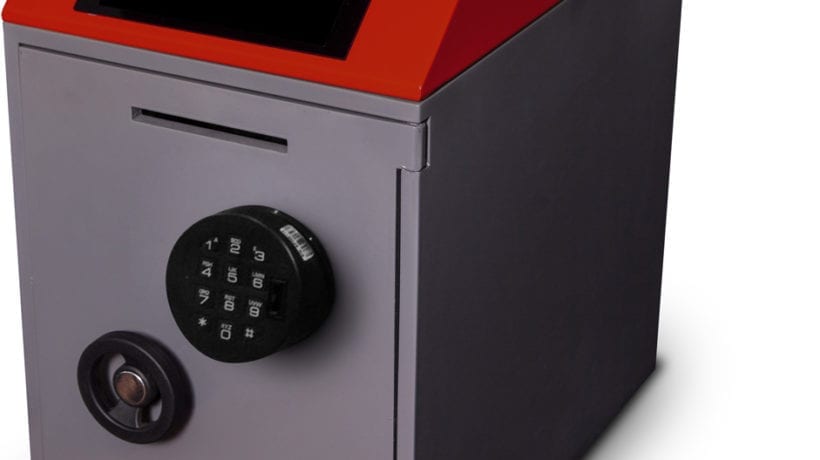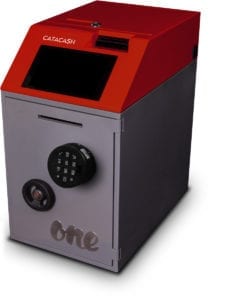We have the benefit here of regularly working with start-up companies as well as individuals who have taken on trade show and event responsibilities for the first time. I thought it would be a good idea to chat with someone who has been through that and could share some insight.
Earlier this year I began a dialogue with a new prospective client, Jessica Pohlen with Cata Company. She recently moved to the United States and opened her company’s first office outside of Brazil. Recently, she completed her first trade show as an exhibitor, and also the first for her company in the US. Hopefully, those who are considering exhibiting can learn from her experiences.
(Chase) Tell us about your company and your role within the company.
(Jessica) Cata Company is headquartered in Brazil. We are a coin and cash management company and that’s kind of where we’ve been focusing. We’re actually now creating other anti-burglary products that are for the cash-in-transit industry. Focused on more large-scale burglaries like what we have dealt with in Brazil. Additionally, products that are for electronics resellers.
I am the country manager responsible for the US market. I opened up the company here, did the background research to make sure that we had a viable product, that we had a large enough market to warrant coming to the US . We’ve actually been really pleased with everything that we’ve seen.
What made you all want to get into exhibiting in trade shows here in the states?
In the past, I worked as a jewelry buyer and owned an import-export company where I attended jewelry shows. I saw the volume of business transacted at the shows, so I knew that trade shows were something coming into the US market that Cata needed to get involved in. We had a small marketing budget, I knew that if we put an ad in the newspaper or online, we were going to spend what we would on a trade show. For us to get in front of the decision-makers we needed to, many of the other methods would be cost prohibitive. Even if we were able to get a meeting with these big executives, we’d be traveling all over the country. We have potential clients from New York City to Boston to Florida to Kansas and Illinois, we can’t financially do that. Trade shows are a great place for companies to get face-time with decision-makers. Though it can get expensive, I believe that the return on investment will be multiples of that of any of the other methods.
That really should be the case if you’re picking the right shows. A company really should be able to capitalize and get a strong ROI. What made you pick this particular show?
First I worked on a market study, who are our potential clients? Because we’re a smaller company, one of the things that we had to think about was getting big wins early on. We developed a strategy that we were going to talk to cash-in-transit companies; Brinks, Loomis, Dunbar and the smaller companies. Then also the banks. One of the things that I found in my research, at least for smart safe, Fifth Third Bank had about 9,000 smart safes in the market, and they were generating a revenue of about $30 million per year for them. So I saw that was a huge opportunity that maybe not all of the banks in the US we’re taking advantage of fully.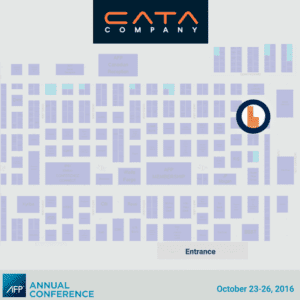 That’s where we started trying to look at different trade shows; where were those banks going to be? Where were the cash-in-transit companies going to be? And one of the things that we noticed at the show that we went to, the Association for Financial Professionals in Orlando, not only was it an event attended by 6500 Treasury and finance professionals, but a lot of the larger banks and all of the larger cash-in-transit companies we’re going to be exhibiting along with a few of our competitors. That was another thing I monitored; which shows were our competitors going to? It was a tough decision to make, I was really worried about making the wrong decision because it’s a huge financial investment for a small company. I was nervous up until the time the show started, then we just had an amazing response to our products that really validated our company and my position to my boss.
That’s where we started trying to look at different trade shows; where were those banks going to be? Where were the cash-in-transit companies going to be? And one of the things that we noticed at the show that we went to, the Association for Financial Professionals in Orlando, not only was it an event attended by 6500 Treasury and finance professionals, but a lot of the larger banks and all of the larger cash-in-transit companies we’re going to be exhibiting along with a few of our competitors. That was another thing I monitored; which shows were our competitors going to? It was a tough decision to make, I was really worried about making the wrong decision because it’s a huge financial investment for a small company. I was nervous up until the time the show started, then we just had an amazing response to our products that really validated our company and my position to my boss.
From what you’re saying, it sounds like you needed to get the actual machines out in front of people so that they could see that they are different and that they do the things that they maybe didn’t expect they could do, or that they couldn’t do back when they had last looked into these machines. Just getting the product out in front of them is, of course, going to be a good thing.
Yes, that was one of the things that was kind of difficult to coordinate because these are really large heavy machines. Especially our smart safe which is 275 pounds of steel but it’s short, it’s only 21 inches tall. When people are walking around shows they’re not looking down at your feet. So we had to make sure that we had a pedestal that was high enough that the machine would be at eye level, and in a position where people would be able to come up and touch it. That was one of the complications of getting everything planned but it was absolutely worth it in the end. When you hand out a flyer it doesn’t compare to people touching your machine and testing it out, it gets a completely different reaction.
That goes back to what you said before, one thing that trade shows can offer is that instead of someone having to lug around a 300-pound safe and try to go visit a bunch of different banks and clients that you would have, you have the ability to have them come to you, and only need to bring those machines to one location. As hard as it is to get the machines into that one location, at least you’re not having to go all over the country or all over the globe carrying these machines.
Let’s get into the trade show process specifically for you, starting with how did you find us or how did you find your exhibit company? What did the beginning stages look like?
I have a theory about finding people that we work with, I like to work through references. I had worked on a consulting project for a group in Richmond, and with a woman who works on trade show floors and on events. I asked her who she would recommend. She recommended FrontLine Exhibits, said that you all were great and that I’d be well taken care of. And I did have a really good experience! I actually quoted two or three other companies as well, and you all beat their prices every time.
After you selected the company you were going to work with, after you got your quotes, what did the rest of the pre-show process look like for you?
Once I got the Freeman booklet that kind of scared the crap out of me (laughter). Once I got the 120-page booklet and started reading through it, it’s not that it’s difficult it’s that it’s a whole different language. Until you’ve had contact with that language it really does feel like a foreign language. Now that we’ve done it, I’m not that intimidated by it, but there were so many working pieces like getting the machines from our factory to the Freeman warehouse, from the warehouse to the show floor, scheduling the forklift so we could raise our smart safe from the crate to the pedestal. There were so many different parts that we had to consider that we didn’t really have the expertise for. It was really helpful to have you and Crystal to give us some advice and let us know what to expect. Crystal really helped out calling me and texting me and making sure that I was getting everything together. That was really helpful.
What were your best and worst experiences while at the show?
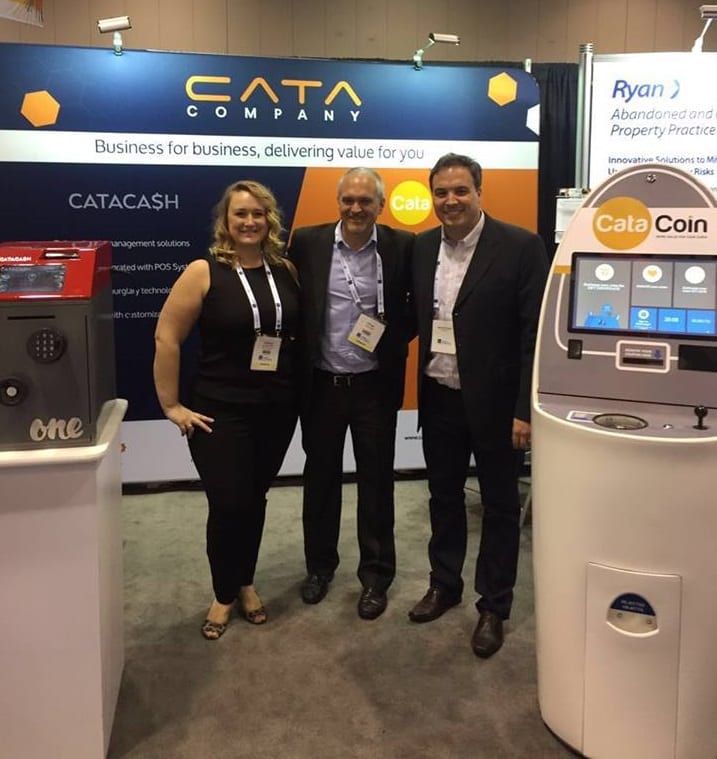 I think the worst was setting up and breaking down. I was supposed to have help from my boss during the setup but it actually took him 36 hours to get from Brazil to Orlando. A trip that would have normally taken 12. So I actually did all of the set up by myself and I was the only non-professional person setting up on that particular day, so I was the only person that looked like a deer in headlights. I was trying to ask to borrow a ladder and this and that, and was put out of my element. It wasn’t that difficult but I had never set up our display before, I had never done any of this so it was a little intimidating. Then breaking down because our machines are so heavy we had to get help with a forklift. One of the things that we found out was that our pallets were not designed to travel repeatedly, so our pallets came back where there’re usually three ribs holding up the base of our smart safe, it only returned with one rib. We had to basically rebuild a pallet. So that was not a very enjoyable experience, but we did our best.
I think the worst was setting up and breaking down. I was supposed to have help from my boss during the setup but it actually took him 36 hours to get from Brazil to Orlando. A trip that would have normally taken 12. So I actually did all of the set up by myself and I was the only non-professional person setting up on that particular day, so I was the only person that looked like a deer in headlights. I was trying to ask to borrow a ladder and this and that, and was put out of my element. It wasn’t that difficult but I had never set up our display before, I had never done any of this so it was a little intimidating. Then breaking down because our machines are so heavy we had to get help with a forklift. One of the things that we found out was that our pallets were not designed to travel repeatedly, so our pallets came back where there’re usually three ribs holding up the base of our smart safe, it only returned with one rib. We had to basically rebuild a pallet. So that was not a very enjoyable experience, but we did our best.
What did you learn through the entire process that you wish you knew beforehand?
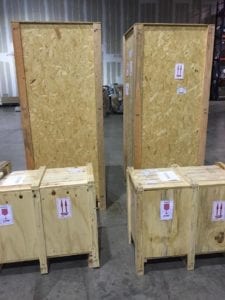 Well one, I wish I knew our pallets needed to be screwed with 10-inch screws or something that could hold it all together better. I think that was our biggest mistake, before upcoming shows that will definitely be something that we rectify so it won’t remain an issue. I’m pretty quick on my feet and having been to different events like this I understood the mechanics of how you need to get people attracted to your booth. Being a 10×10 booth you’re the least interesting, we don’t have the spinning fabric hanging signs above our head, we didn’t have a television screen, we didn’t have the great giveaways, we weren’t hosting a cocktail hour, so basically we had to find a way to hunt the people down that we wanted to talk to and create a flow of people into our booth.
Well one, I wish I knew our pallets needed to be screwed with 10-inch screws or something that could hold it all together better. I think that was our biggest mistake, before upcoming shows that will definitely be something that we rectify so it won’t remain an issue. I’m pretty quick on my feet and having been to different events like this I understood the mechanics of how you need to get people attracted to your booth. Being a 10×10 booth you’re the least interesting, we don’t have the spinning fabric hanging signs above our head, we didn’t have a television screen, we didn’t have the great giveaways, we weren’t hosting a cocktail hour, so basically we had to find a way to hunt the people down that we wanted to talk to and create a flow of people into our booth.
What was your strategy for that?
One thing that is tough but you have to do, is that you cannot sit down. If you are sitting down in your booth nobody will come up to you. If your body language is giving off anything that is not super positive, that the product is interesting and great , no one will come talk to you. The company next to us were a father-son team and they were great and they had a great product, but they just sat at their booth the whole time. I’m sure at the end of the day their feet felt a lot better than mine, but at the end of the day I had a much longer list of leads. I had so many conversations and demonstrations that literally the day went by so quickly. It made the event worth it.
Which one piece of advice would you give to a first-time exhibitor?
There are a few, but the most important at the event was that we were able to create the flow of interest into our booth. I think one of the things that you have to do is look past any embarrassment or anxiety you may have going up to people and you need to just talk to everybody and anybody that you can get to because that’s what you’re there for. There just needs to be pure focus on who could potentially be a client and how am I going to talk to them? How will they remember me? How will I remember them? I met two gentlemen that were from a very famous bank in Ohio, and the conversation that I had with them focused on our product, but also focused around where they’re from. They had told me about a dish from Ohio, oatmeal with sausage in it called goetta. That was something that I was able to take a note of on our lead retrieval device, and that was something I was able to reference in an email. I’m sure that I wasn’t talking to that many people at the show about sausage oatmeal, so not only is he going to remember our conversation he’s going to remember our product. I also gave a product demonstration and flyer to them. you meet so many people but you have to try to create some sort of connection, that’s what you’re there for, you need to be generating leads so that you can make your show worth it.
Definitely. Finding the ways to build rapport with people in the short 5 to 10 seconds is not easy so I think that’s great that you did that. Any advice that you would give beyond the trade show floor, just the process of designing ordering setting up, getting all the show materials together… Do you have any advice on that process?
You need to be really diligent about materials that you are creating, they need to be really focused on who is going to be at your show. For us, when going to a treasury show we would use one type of language, when we’re going to a loss protection show we would use a modified language about our product. You need to understand where you’re going and the audience that you’re going to be talking to prepare your booth space and your staff and your materials for that.
Do you plan to exhibit at any additional trade shows in the future?
We do! Right now we’re cash-poor and idea-rich, so we have plenty of plans to exhibit, but it is a financial investment. At the same time though it has provided some great leads, so we will definitely be doing shows in the future. We’re just going to have to narrow down the list of potential shows that we want to exhibit at. We’ll add a few conferences as well, that I won’t necessarily be able to bring our machines. I think they’re great networking events that can keep you up to date on what’s going on in the industry.
Sounds like overall you had a pretty good experience!
It was a really good experience! I’m massively relieved that it was a good show I can’t even imagine the stress I would have been under if it had not been a good show. It was a significant investment for a small company, especially when coming from another country with a low exchange rate.
Thanks for all of your insight Jessica. I’m sure it will help some exhibitors to be!
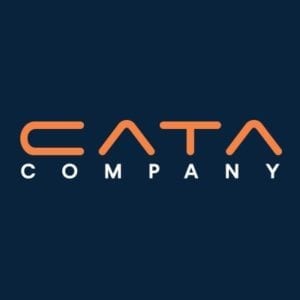 To learn more about Cata Company visit www.catacompany.com
To learn more about Cata Company visit www.catacompany.com
